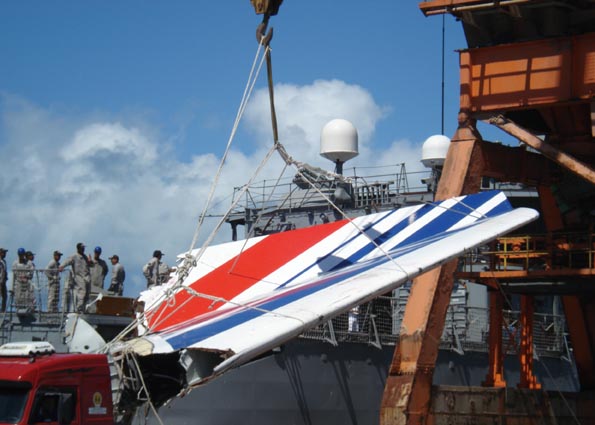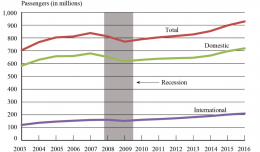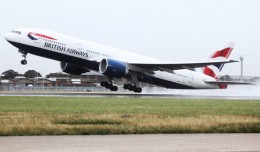(Editors Note: This week for Throwback Thursday, we revisit columnist David J. Williams’ article from November of 2013. It explains how the aviation industry has made itself safer by learning from its accidents.)
Aircraft built near the dawn of aviation gave no consideration to the occupants ability to survive a crash. When seatbelts were added, they were simply there to keep the pilot seated and in control, not to protect them in case of a crash. However in the 1920s, aircraft began to be used to spread chemicals onto crops. This method of application included many risks associated with flying just above ground level. Because of this, special care began to be taken to protect the pilot in the event of a mishap.
The agricultural aviation industry exploded in growth in the 1950’s and 1960’s. Surplus aircraft from World War II and the Korean War such as the Boeing Stearman, Bell 47 helicopter, and even the venerable B-17 bomber, were fitted with hoppers and spray booms. As these military surplus aircraft became either collectible or excessively expensive to maintain, aircraft manufactures started producing purpose built agricultural aircraft. Notable of these new production aircraft were the Piper Pawnee, Grumman Ag Cat, and Transavia Airtruk. These aircraft were designed carry and dispense heavy loads of chemicals, while protecting the pilot in the event of a crash.
Because of the mission they are designed to fly, purpose built agricultural aircraft are designed with various safety measures built into them. These may include safety cages around the pilot that can withstand the force of impact in a crash, or even a cockpit that can separate from the aircraft protecting the pilot from both the chemicals and a potential fire. Crashes can be relatively common, yet they rarely involve loss of life due to the design of these aircraft. Like the modern car, an agricultural airplane is designed with an focus on protecting the occupants during a crash. Over time, other small general aviation aircraft have adopted some of the safety features pioneered by agricultural aircraft. Seatbelt harnesses and seats capable of withstanding heavy loads have been incorporated, and some aircraft are now even being fitted with airbags. However, items such as safety cages have not been adopted due to the weight that would be added to the aircraft. While this added weight can be easily accommodated in a cropduster, adding them to a small general aviation airplane could be a crippling burden both financially and operationally.

The crash of Air France 447 is expected to lead to improvements in aviation safety. Photo by Roberto Maltchik via Wikimedia Commons
Just like with general aviation, a major focus in the commercial air transportation sector has been making transport aircraft that are safer to fly, thus reducing the number of accidents that occur. Seats and seatbelts have both been designed to minimize the stresses of a high impact crash on the occupant. Meanwhile, seatbacks are now designed to minimize injury to both the passenger in that seat and the one in the seat behind. The wings on modern airliners have been optimized for both high and low speed flight without the problems experienced by early airliners. Modern jet engines have become exceptionally reliable. Today, airline pilots receive extensive and frequent training in full motion simulators with scenarios that have been developed based on previous incidents. Through this use of simulator-based training, pilots are able to learn from the mistakes of those who came before them.
Onboard modern airliners, the occupants that currently face the greatest risk are those who are the youngest. The FAA allows children under the age of two to be held in the lap of one of their parents, who believe that they will be able to hold on and protect their child. Extensive testing has shown this to be entirely inaccurate however. The sudden shock and stress of the impact causes an immediate release of the child from the parent’s arms. Often times, this results in the child impacting the seat back. Accidents that are survivable for adults and properly restrained children are often fatal for lap infants. This gap in safety is distressing, and yet is in place for an odd reason. Parents with children under two often have minimal finances available for travel. Mandating seats for all occupants, with the ensuing cost increase, would push many of these families to drive in lieu of flying. A child in a safety seat in the safest car is far more likely to be killed traveling from point A to point B than being unsecured in an airliner. It’s a safety statistic that is irrefutable, and a perfect testimonial to just how safe commercial air travel is. Of course, the safest option for the traveling public is to purchase seats for all occupants, while using FAA approved safety seats for the young children.
Over the past fifty years, the aviation industry has gained massive amounts of knowledge about aviation safety. Using this knowledge, the industry has developed the technology that is required to make all forms of transportation by air exceptionally safe. Yet there are still safety improvements to be made. Adjustments are constantly being made to existing regulations, particular in the wake of major incidents. It is this constant search for improvements to safety that has made flying the safest mode of transportation overall.
NYCAviation Columnist David J. Williams is a former airline Captain and currently involved with aviation safety.







